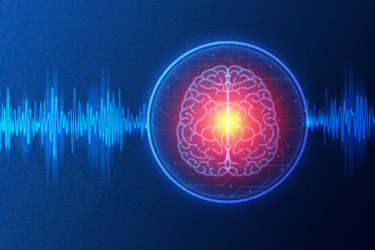Tips To Overcome 4 Challenges In The Neurotech Startup World
By Liron Nunez Weissman, CEO, Corundum Neuroscience; and Sharena Rice, Ph.D., research scientist, Sanmai Technologies PBC

Over recent decades, neuroscience has transitioned from a predominantly academic endeavor to a field rich with commercial potential. Consumer neurotechnologies emerged in the early 2000s with NeuroSky’s EEG-based toys, which decoded brain waves to move objects. In the burgeoning landscape of technological innovation since then, neuroscience startups have promised breakthroughs ranging from enhanced brain-machine interfaces to novel therapies for neuropsychiatric conditions. Yet, a sobering pattern has emerged as, too often, these startups find themselves struggling early on, or worse, declaring bankruptcy.
This can, and has, damaged the reputation of the domain, with nightmarish consequences. Up-and-coming solutions produced by companies in the field can suffer from years of setbacks to their progress, as financial resources and talent flock to other, more lucrative sectors. Moreover, the regulatory and reimbursement bodies may become more stringent in their standards, while consumers may dismiss rigorous reproducible neuroscience research with blanket statements.
Such events send shockwaves through the investor community. Due diligence processes become more invasive and capital scarcer, even for promising startups in the same vertical, sowing investor doubt in the broader neuroscience startup space. This can lead to reduced funding for an extended period, stifling innovation and growth and resulting in slower growth until the sector can achieve both the technological maturity and venture confidence needed to build and commercialize in the space.
While conventional wisdom emphasizes the significance of product-market fit and founder fit, we have seen that the downfall of neuroscience startups often arises from complex factors that are regulatory, financial, and clinical in nature.
With the tremendous impact that neuroscience innovation is poised to have on humanity, founders and investors have an opportunity. By understanding the traps and challenges — seeing where others have failed — entrepreneurs in this sector can map their strategies early on, address these issues, and set themselves up for long-term commercial success.
1. Regulatory Barriers to Neuroscience Advancement
The stringent FDA regulations for medical devices and therapies demand rigorous testing and evidence of efficacy. Companies such as neuromodulation startup Nuvectra had promising technologies, but still filed for bankruptcy due to regulatory hurdles that prolonged their product’s time to market. Even if a startup can survive the prolonged development phase, the cost involved in regulatory compliance is often exorbitant, putting immense financial strain on the organization.
Some neuroscience solutions have been reclassified by regulatory agencies over the years. For instance, Nixon’s War on Drugs has prevented the use and research of many psychedelic substances in the United States since the 1970s. However, in recent years, academic research has demonstrated the safety and efficacy of psychedelic substances in improving outcomes for various mental health conditions. As a result, some types of psychedelics have become decriminalized in a select few states. With a growing pool of trained psychedelic practitioners, psychedelics are only now becoming a more accepted treatment option.
On the flip side, some well-researched devices with strong safety profiles are facing tighter regulations. In 2022, EU regulators reclassified noninvasive brain stimulation devices not intended for medical purposes as Class III medical devices. This resulted in technologies such as transcranial magnetic stimulation and transcranial electric stimulation, which optimize brain activity without surgery, being regulated as strictly as technologies that require surgical implants in the EU.
We’ve seen legislation in the neuroscience space shift over time, with the changing culture and scientific understanding of decision makers. This has posed a barrier for many in the space to advance from research to commercialization. Keeping an eye on the regulatory landscape, understanding its direction, and working with advocacy groups to steer it forward can help founders navigate the regulatory minefield and ensure they are working in an environment that can support the adoption of new neuroscience solutions.
2. Reimbursement Models Prevent Market Entry
Startups in the neuroscience space must also navigate the intricacies of healthcare reimbursement models. Unlike tech companies where revenue often starts flowing soon after market entry, medical technologies often face long gestation periods before they are covered by insurance, a pivotal factor in consumer adoption.
Pear Therapeutics serves as a compelling example of the challenges that neuroscience and digital therapeutics startups face. The company had secured FDA approval for its prescription digital therapies, suggesting a strong product-market fit. Yet, Pear Therapeutics struggled with insurance reimbursement and had discrepancies in its clinical trials, which evaluated a different product than that which it was trying to commercialize. This led to bankruptcy and caused investment in the digital therapeutics sector generally to dry up.
Interestingly, some neuroscience wellness products are neither reimbursable by insurance or tax-advantaged accounts but have nevertheless achieved strong market penetration and helped many people to be proactive with their health. This has been the case for wearables, meditation aids, and monitors for sleep and exercise. However, companies developing wellness products face the challenge of creating moats of defensibility in a world of potential copycats, as well as true demonstrations that the products do what they claim to do. These defenses can come through intellectual property strategy and a strong applied science backbone for the technology.
Notwithstanding, learning from the Pear Therapeutics example, neuroscience solutions must have strong product-market fit, the science must fully back up any claims for the specific product in question (more on this next), and there must be a pathway to reimbursement from the healthcare system.
3. Scientific And Clinical Evidence Can Make Or Break A Startup’s Success
Rigor and reproducibility in science are critical elements for a company’s success. A startup’s leadership must therefore ensure they fully understand how to evaluate scientific research and assess risks. If not, they may find themselves hamstrung in reproducing results with their products.
The scientific rigor required to substantiate medical claims is exceptionally high. And while science serves as the foundation of engineering, if engineers ignore the science when building, they may end up creating a “pseudo technology” that claims to do something it cannot.
To overcome the hurdles of rigor and reproducibility of neuroscience technologies, founders must provide robust scientific and clinical evidence in well-controlled studies and with well-constructed technologies. In doing so, they can win the trust of consumers and medical professionals.
4. Consumer Acceptance Beyond Early Adopters
Despite the immense potential to improve lives, neuroscience-based technologies, such as transcranial magnetic stimulation devices, often require specialized training to be used properly. Relatively few psychiatrists are neuropsychiatrists. Among those early adopters of new neuromodulation devices, the training timeline can have a limiting effect on the adoption of the technology, even if the clinical outcomes demonstrate great safety and efficacy. Similarly, mental health treatments using ketamine and psychedelics may need specialized training among clinicians to aid patients in their healing journey. These market dynamics make it difficult for solutions to reach patients.
As such, some startups begin, pivot, or expand into wellness products to circumvent stringent medical regulations. Wellness devices are not required to have their claims evaluated by regulatory agencies, such as the FDA, but may have the potential to improve people’s lives. However, moving to non-medical status requires a change in marketing focus, from clinicians to a wider consumer audience, necessitating a shift in strategy and customer engagement models — something companies may not be prepared for.
Whether for medical use or wellness applications, there remains intrigue among consumers and clinicians in the possibilities created with neuroscience-driven innovation. Yet, transitioning from early to mass adoption still poses a significant hurdle. Technologists, entrepreneurs, neuroscientists, and others invested in developing these new technological approaches must carefully consider their goals, who their end users are, and the financial runway that will be required long-term to achieve market acceptance.
Implications And Forward Outlook
The issues at hand are neither superficial nor easily navigable. Failure to address the issues will stifle innovation and jeopardize the substantial investments made in this sector. These are systemic hurdles that can obstruct even the greatest neuroscience startup teams.
Yet, knowing about the issues contributing to the failure of previous neuroscience startups can facilitate the development of resilient business models and help realize the sector's immense promise. We can see the unique challenges in this space, and we are excited to develop robust strategies that extend beyond conventional notions of product and founder fit.
Collaboration between startups, regulatory agencies, and reimbursement authorities can pave the way for effective solutions. By understanding these common problems and proactively adopting strategies to mitigate them, startups in this field can navigate the complexities with greater confidence and integrity, and ultimately position themselves for long-term success.
 About The Authors:
About The Authors:
Liron Nunez Weissman is the CEO of Corundum Neuroscience, a venture builder and fund advancing transformative neuroscience solutions from lab-to-life.
 Sharena Rice, Ph.D., is a research scientist at Sanmai Technologies PBC and a contributing editor at Neurotech Reports.
Sharena Rice, Ph.D., is a research scientist at Sanmai Technologies PBC and a contributing editor at Neurotech Reports.
